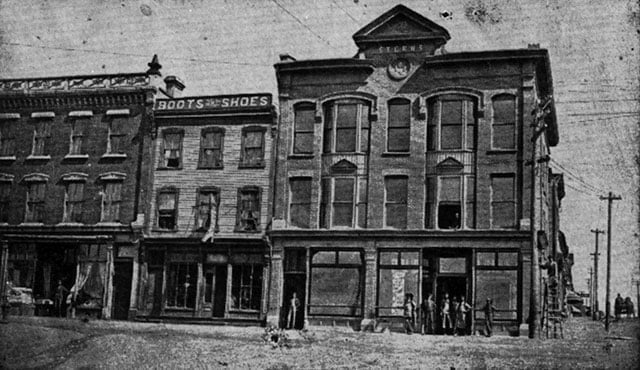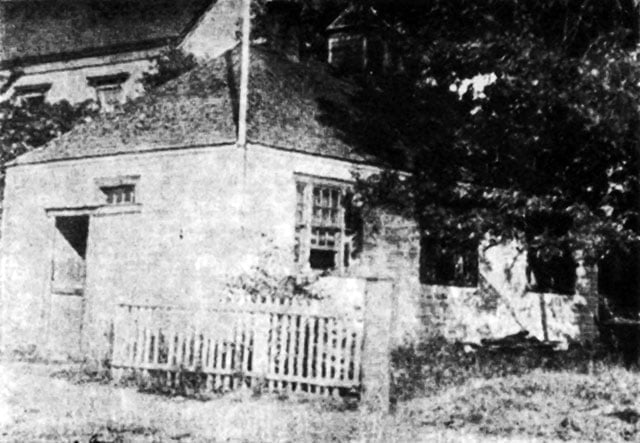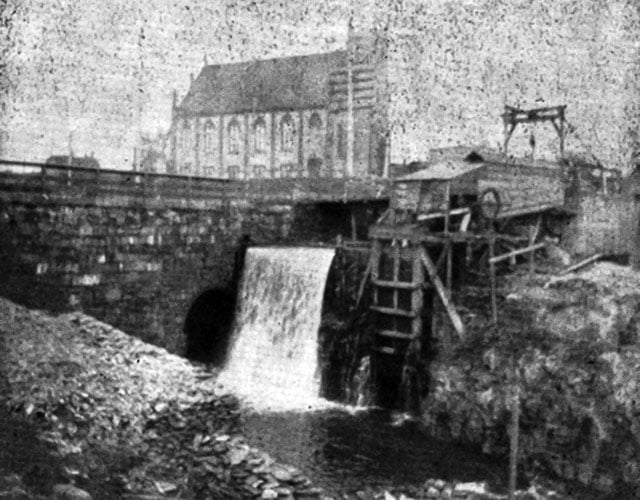From The Story of Dartmouth, by John P. Martin:
In 1914 the whole world commenced to turn topsy-turvy. Our first upset occurred on January 28th, when wooden Greenvale School with its valuable museum specimens and library books was completely destroyed by fire. We got another shock in May when the “Empress of Ireland” sunk in the St. Lawrence with several prominent personages.
The crowded school situation was now greatly aggravated. In this expediency, most pupils were put on part time in Central and Park Schools. Other classes were set up in Christ Church Parish Hall and in the Merson building on Dundas Street. Plans were then made to erect new schools, and contracts were subsequently awarded to Rhodes Curry and Co., for the construction of fireproof structures at Greenvale and at Hawthorne.
Meanwhile the work of demolishing and removing buildings on the new Post Office site was rapidly progressing. The track of the Eastern railroad was well beyond Musquodoboit Harbor. Halifax and Dartmouth Boards of Trade now collaborated to urge upon the Federal Government the necessity of a harbor bridge so that freight from Dartmouth and the eastern sections of the County could go by rail directly across to Halifax. A bridge would also be the means of extending the Halifax tram lines to Dartmouth and to Cow Bay beach for summer tourist trade.
All these projects made life in Dartmouth look pretty rosy in the early summer of 1914. Boating, swimming, bathing, baseball, tennis and other outdoor activities were expanding, as more and more growing girls and boys emulated their oldsters. The lakes were alive with all sorts of craft. Shirt-waisted ladies and straw-hatted men of all ages reappeared in the usual summer garb. Seldom did we see a military or a naval uniform in Dartmouth, except when some local boy like George Myers came into port on HMCS ‘‘Canada” or the ‘Niobe” which then comprised the whole Canadian Navy on the Atlantic coast. Over the years, most of us had received training in cadet corps. Some afterwards joined various Halifax volunteer regiments for summer drill and encampment. Others attended Naval College, but probably very few contemplated a military career.
The Brightwood Golf Club under President I. W. Vidito opened a 9-hole golf course with a grand celebration in July. Unaware of any impending peril, the Banook Club Committee went ahead with plans for a Natal Day celebration (which was never held), and already had ordered the regular supply of fireworks.
Then the deluge of blood commenced in Europe.
The heir to the Austrian throne was assassinated. Germany flew to arms to assist her ally; declared war on Russia and France, and invaded Belgium. On August 4th, Britain declared war against Germany. Everybody was aroused to action.
At Dartmouth, sailors from a French trawler on the Marine slip paraded the streets with the Union Jack and Tricolor, alternately singing “God Save the King” and the “Marsellaise”. Troops from the volunteer regiments of Halifax manned the various port outposts and vulnerable points east of Dartmouth. Eastern Passage was closed to shipping. All the sources of our water supply system were heavily guarded. Scores of local boys were either already in the ranks, or on their way to Valcartier to join the First Canadian Contingent. Rumors were rife of enemy submarines.
Big transatlantic liners including the “Mauretania” and the “Cedric” raced for refuge into Halifax harbor, and anchored within shouting distance of the ferry route. Meat, flour and other produce took a sharp rise. The local Red Cross Society commenced to collect money and clothing for war purposes. The Canadian Patriotic Fund, to assist the families of men in the services, was organized. The Committee who canvassed in Dartmouth comprised Mayor Williams, Town Clerk Elliot, J. W. Allison, James Burchell, E. M. Walker, A. C. Pyke, James Tobin, Dr. F. W. Stevens, Leo Graham. The Acadia Sugar Refinery subscribed $10,000, and the Town Council voted $2,500. In Europe the German army was sweeping onward.
In the autumn Dartmouth joined with other centres in an extensive campaign for funds, food and clothing for the relief of sufferers in devastated Belgium. The local chairman was ex-Mayor A. C. Johnston, grandson of a former Premier. About 150 crates and barrels of food, clothing, boots, groceries and the like, were packed and added to the tons of similar material at Halifax where it was loaded aboard ships chartered by the Nova Scotia Government, and sent forward as a contribution of the people of this Province.
Meantime Dartmouth boys were continuing to rally to the colors, many of them enlisting with the well-known 25th Battalion then recruiting at Halifax. In Dartmouth the Home Defence Guards were organized and commenced drilling in the Dartmouth Rink under Captains H. D. Creighton, Dr. F. W. Stevens and J. Lorn Allan.
The Eastern Railway to Dean Settlement was completed that year, and on December 21st brought in its first load of passengers. They were disembarked at Woodside because the Government had not yet taken over the new road from the contractors.







